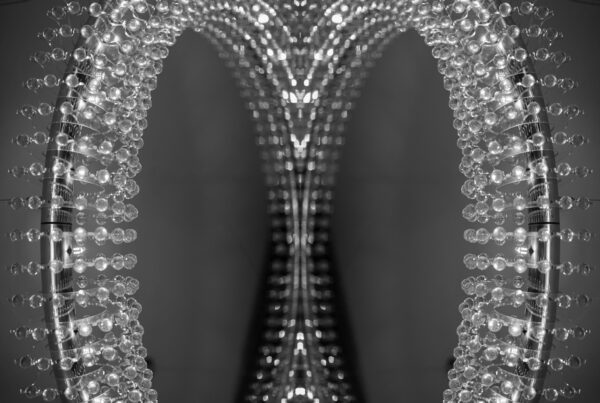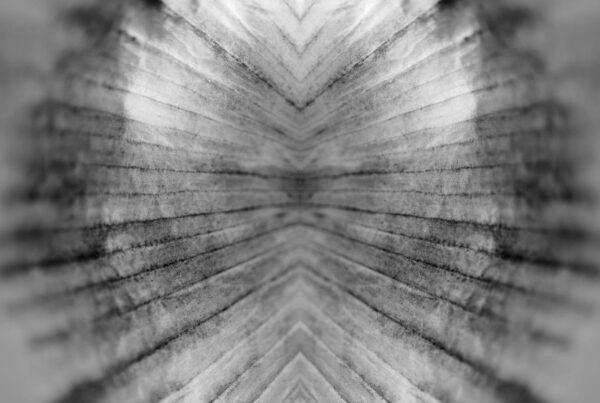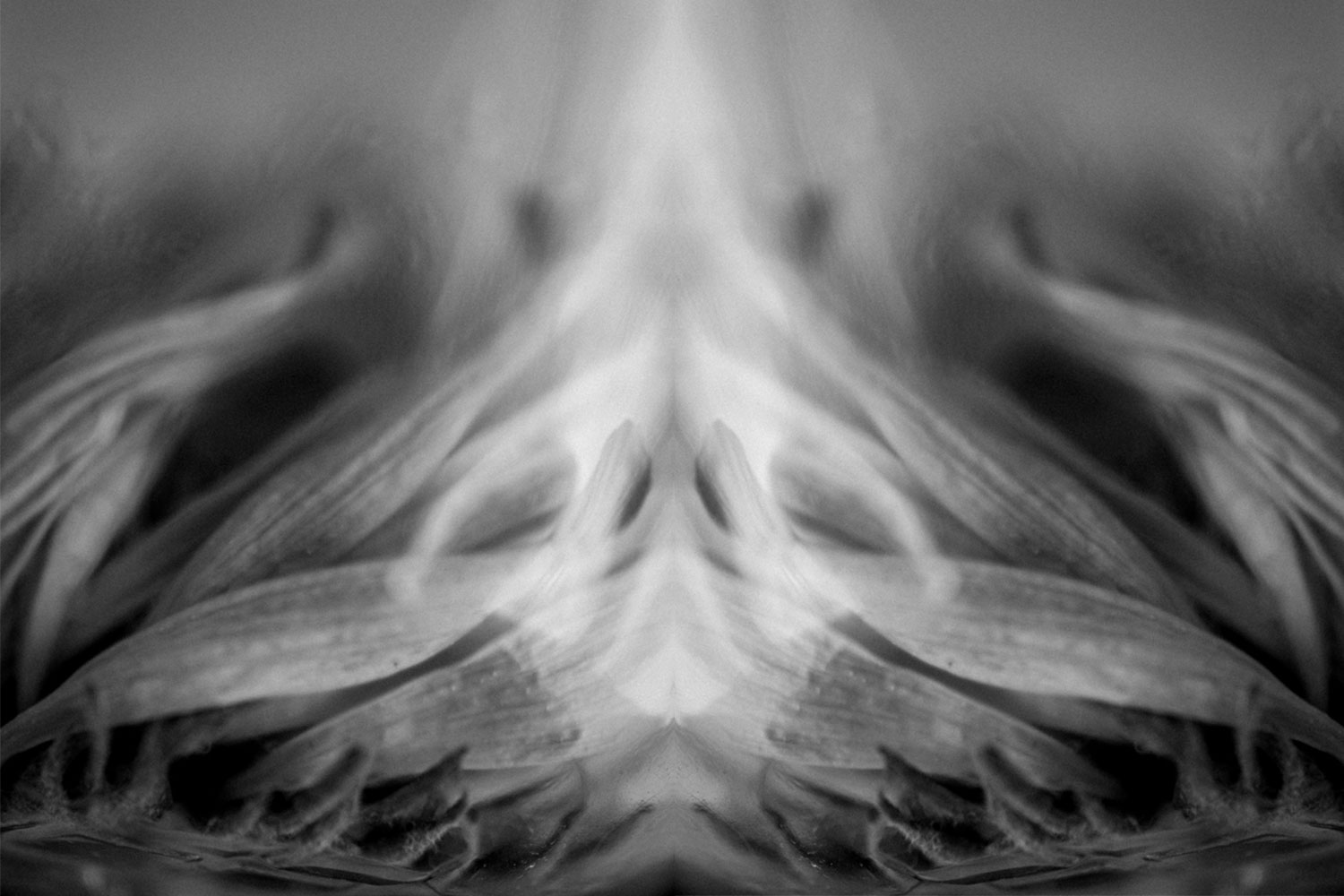
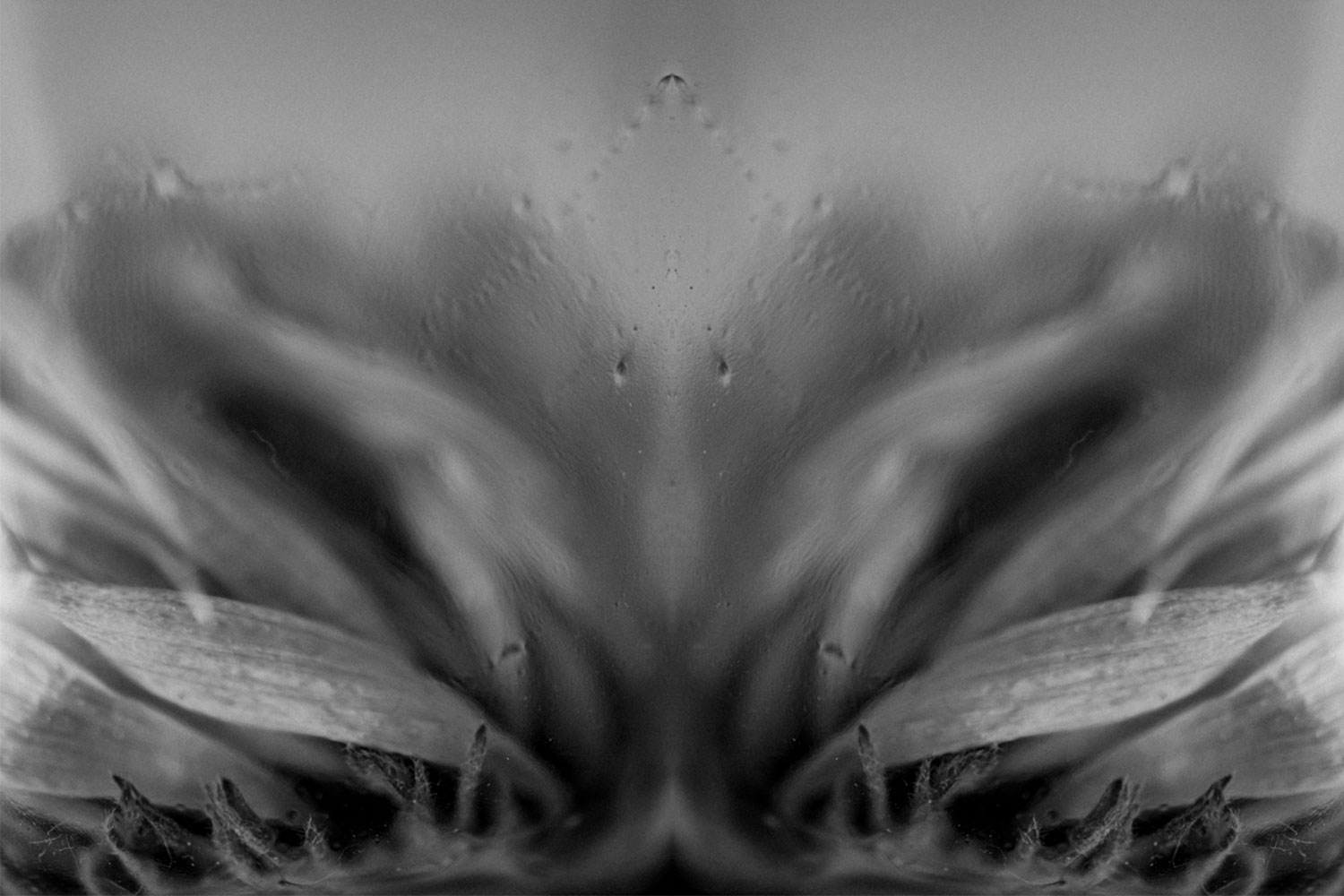
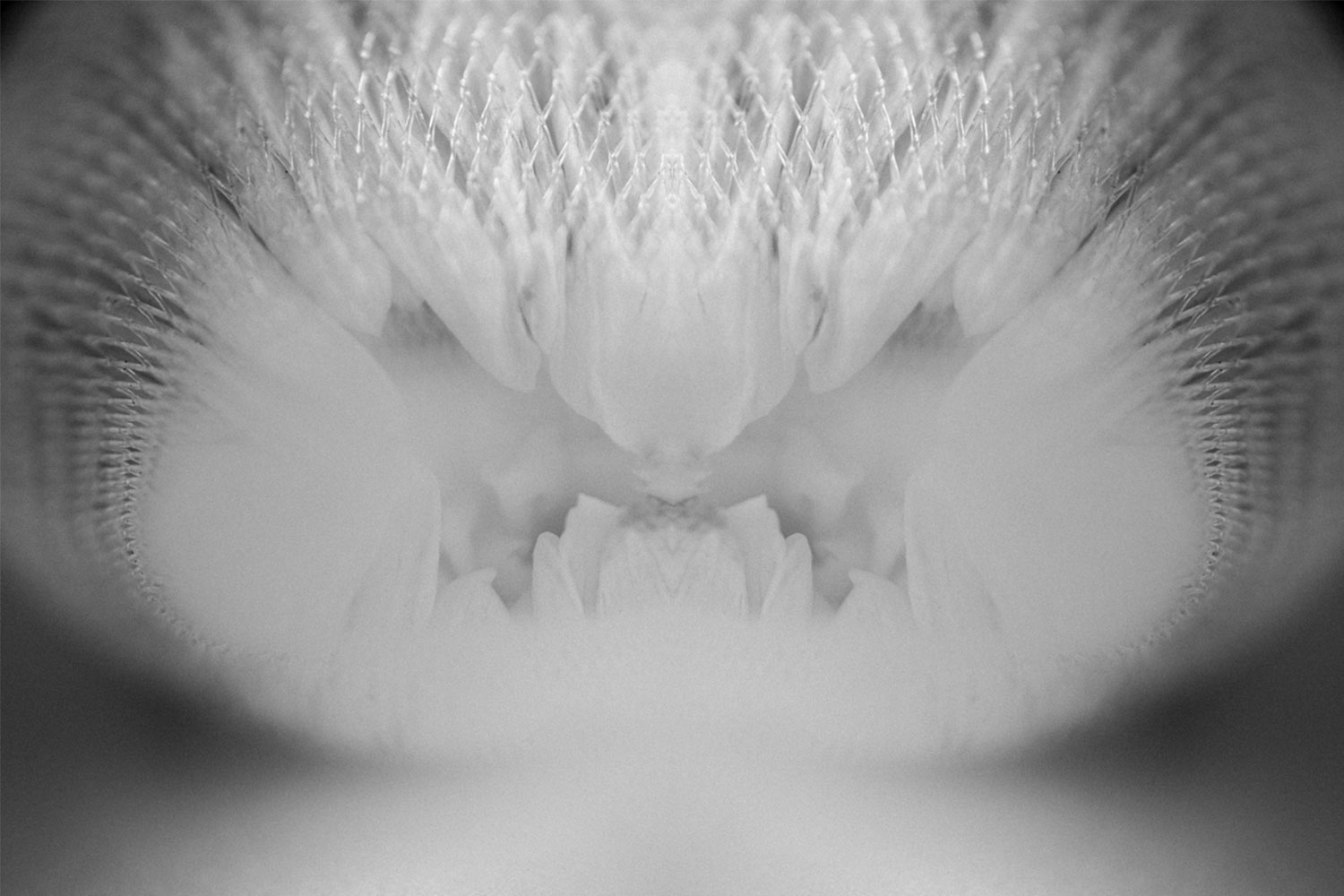
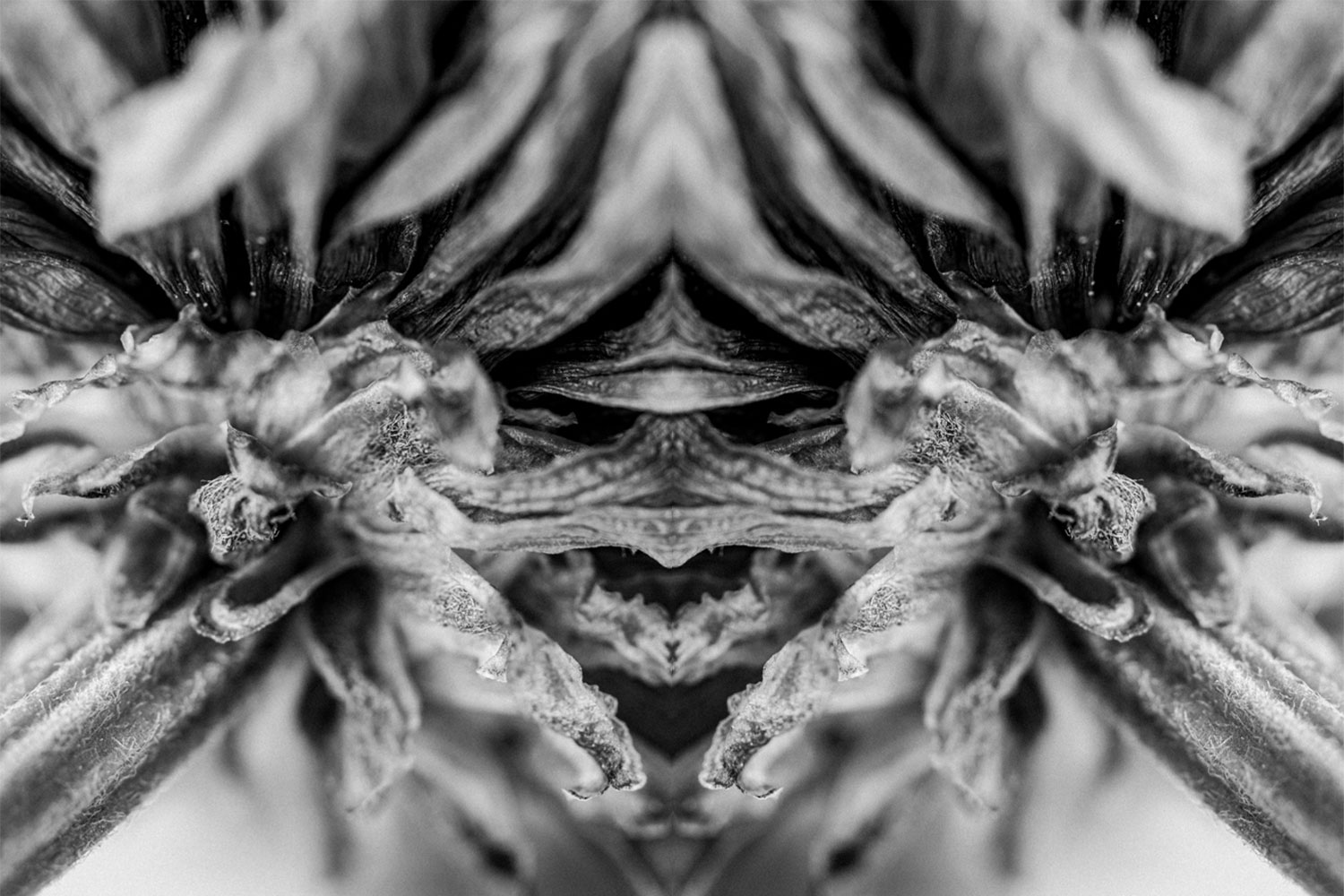
Ephemeral flower imagery
The photos in this journal entry are experimental pieces. The work is titled Ephemeral flower imagery. Which seems appropriate, as the flowers used in the artworks are now dust. As having – found – the flowers, rather than picked fresh flowers their lifespan is always shortened.
“An ephemeral plant is one marked by short life cycles. The word ephemeral means transitory or quickly fading.”
Source: Wikipedia
Pareidolia effect experiment
I use found decomposing flowers to create pareidolia effect themed work. Part of the process is to photograph them during their breaking down and decaying phases. I test several compositions to see if mirroring the photo will achieve the pareidolia effect – seeing things [shapes, patterns] that aren’t in-fact there.
This particular set of photos are some of my favourites. Especially the first two artworks in this journal post. I used the two artworks as desktop pictures on my computer monitors. And enjoyed the pleasing calm zen look and feel of the imagery in my workspace environment.
My workflow
Following is an outline of the workflow I used to produce the artworks in this journal post.
Selection
The journey begins with the selection of a flower.
Observation
Once I’ve selected a flower for this type of work I then study the details of the organic specimen. The more complex and intricate in detail the better the final result is.
Document
Next, I photograph the flower from several different angles.
Image selection
Selecting the best images requires some guess work. And a ton of experimentation. I’ve found the most efficient workflow is to use screenshots, and concept mirroring the photos. More often than not, these concepts are discarded, and end up in the trash bin!
Conversion
I then covert the photos from color to black and white.
Even at this late stage in the workflow I am NOT always successful. Sometimes the photo doesn’t join smoothly at the centre axis line. There’s various reasons for this. Such as the amount of negative space in the image – especially on the joining centre axis. The amount of grain added in post production [more grain seems to give a better result], and finally the Photoshop skills required to blend the edges, some images are just too intricate.
Eventually, I am rewarded and share the artworks I enjoy here on – Tahnia Roberts Artworks – website. Either as part of the Nature gallery or alternatively as a journal post like this one.
Similar art works can be found here:
Artist: © Tahnia Roberts 2020
Category: Photography
Style: Fine art
Subject: Ephemeral flower images
Medium: Digital, photo, black and white
Artist country: Malaysia

